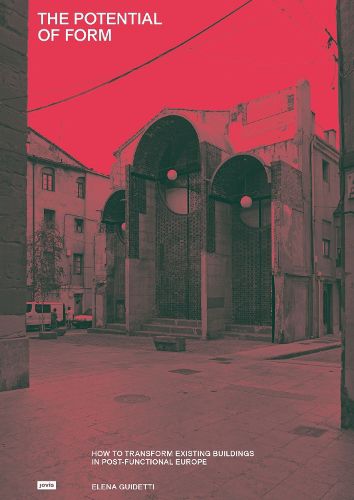Readings Newsletter
Become a Readings Member to make your shopping experience even easier.
Sign in or sign up for free!
You’re not far away from qualifying for FREE standard shipping within Australia
You’ve qualified for FREE standard shipping within Australia
The cart is loading…






How can we explore adaptations of old buildings from a fresh, post-functional perspective? Exploring the concept of transformative potential, this book shows how the repurposing of existing buildings uncovers untapped possibilities that go beyond traditional categories. Analyzing several European examples in depth, it asks how architectural designs change over time and what this means for sustainability and preserving heritage. Drawings illustrate how architectural forms interact with their functions and environmental effects, providing a dynamic exploration of adaptive reuse. The Potential of Form suggests that adapting buildings involves balancing their design interventions, their consistency across time, and the latent energy embedded in their architectural form.
With an afterword by Matteo Robiglio, Full Professor in Architectural and Urban Design at the Department of Architecture and Design of Politecnico di Torino
Explores new methods for repurposing old buildings, using an innovative framework
Presents detailed case studies of adaptive reuse in European architecture (i.e. Bourse de Commerce, Elbphilharmonie, Duperre Playground, Vitali Sheds, PC Caritas, Alveoles)
Richly illustrated with drawings by the author
$9.00 standard shipping within Australia
FREE standard shipping within Australia for orders over $100.00
Express & International shipping calculated at checkout
How can we explore adaptations of old buildings from a fresh, post-functional perspective? Exploring the concept of transformative potential, this book shows how the repurposing of existing buildings uncovers untapped possibilities that go beyond traditional categories. Analyzing several European examples in depth, it asks how architectural designs change over time and what this means for sustainability and preserving heritage. Drawings illustrate how architectural forms interact with their functions and environmental effects, providing a dynamic exploration of adaptive reuse. The Potential of Form suggests that adapting buildings involves balancing their design interventions, their consistency across time, and the latent energy embedded in their architectural form.
With an afterword by Matteo Robiglio, Full Professor in Architectural and Urban Design at the Department of Architecture and Design of Politecnico di Torino
Explores new methods for repurposing old buildings, using an innovative framework
Presents detailed case studies of adaptive reuse in European architecture (i.e. Bourse de Commerce, Elbphilharmonie, Duperre Playground, Vitali Sheds, PC Caritas, Alveoles)
Richly illustrated with drawings by the author